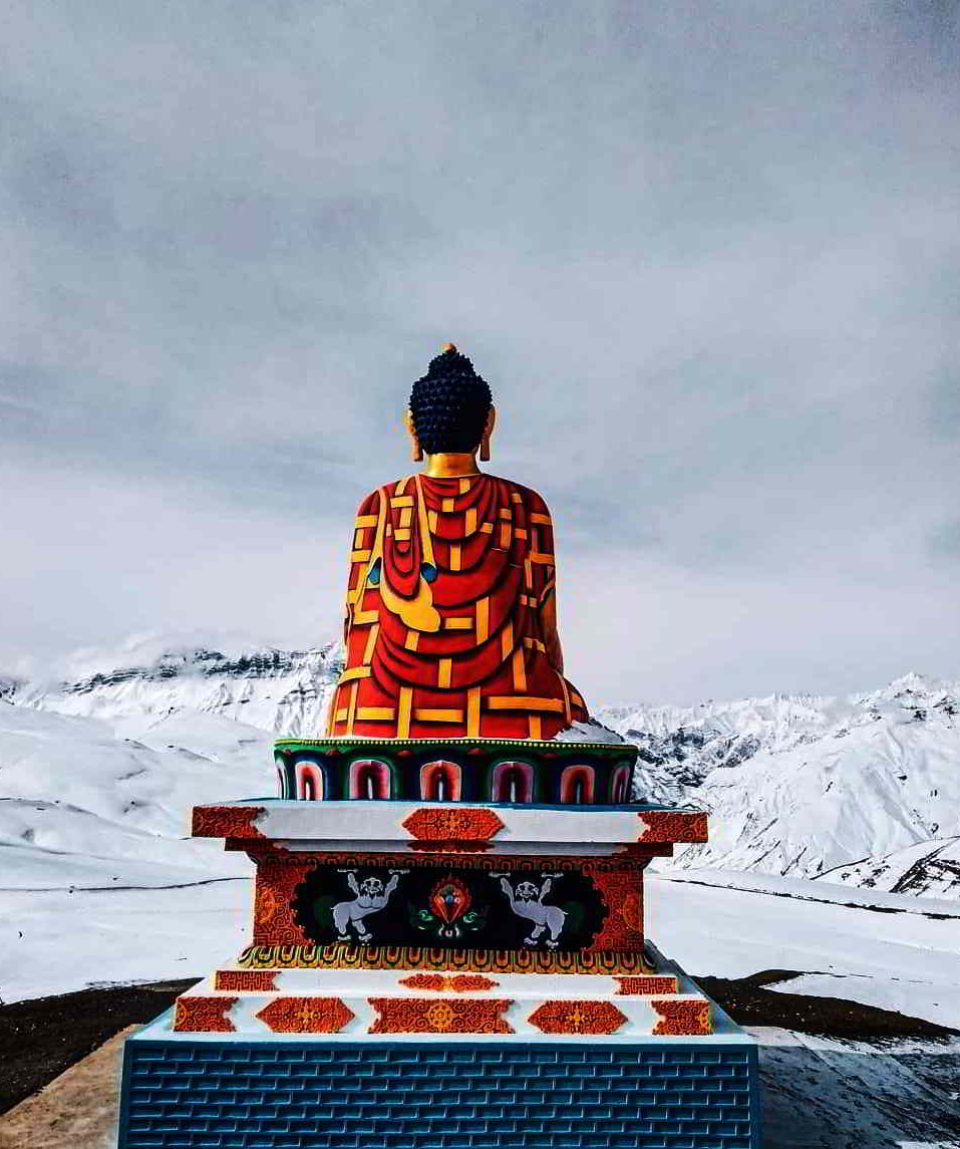Winter Spiti Valley Tour 8 Days
fromThe perfect time to visit winter Spiti Valley tour between March to June. The average temperature of the entire area during that time stays around -10 degrees Celcius.
-
Reviews 0 Reviews0/5
-
Vacation Style Holiday Type
-
Activity Level Challenging
-
Spiti is a cold desert valley town in the Himachal Pradesh at a height of 12,500 ft above the sea level. It is also known to be the coldest place in all over India and has emerged to be the most attractive place for the tourists. It is the dream of all the travellers to explore this region once in their lifetime.
Spiti Valley is an absolute adventure to many and it is a great pleasure to watch the landscapes filled with exotic flowers and immensely attractive meadows and pine forests. This panoramic valley is packed with small huts and the beautiful Buddhist monasteries settled by people who live plain lives and they welcome tourists with open arms.
There are so many places to visit during the winter Spiti Valley tour including Key Monastery, Langza Buddha Statue, Chitkul, Kalpa, Tabo, Komic, Dhankar Village and others places. It is said that the people are strongly influenced by the Tibetan Buddhism, so travellers find it exciting to explore the religion and culture followed by the locals here.
- Provide Breakfast and dinner on your tour but on Day 1 you will get dinner and Day 8 only breakfast.
- We will make you feel comfortable in Non-AC Tempo Traveller / Bolero / Xylo/ Innova for the tour as per Itinerary.
- You will be given a proficient driver who has the experience and knowledge.
- Fuel charges and driver’s allowance.
- Sightseeing expedition mentioned in the Itinerary.
- 5% GST
- Any personal expenses for food or any other reason
- Expenses incurred on availing porters.
- Costs arising out of situations like natural calamities, roadblocks, floods, or landslides.
- Expenses for entry fees to any monasteries, camera charges, safaris, or adventure activities like rafting, paragliding, etc.
- Costs on telephone bills, laundry, tips, and others as well
- Any other expenses not included in the Inclusions list
- Day 1 Shimla - Sangla Valley ( 190 Kms, 8 hours)
- Day 2 Sangla Valley - Chitkul - Kalpa (80 kms - 6-7 hrs)
- Day 3 Kalpa - Nako Lake - Geyu Mummy - Tabo (161 Km, 7 Hrs)
- Day 4 Tabo - Pin Valley - Dhankar - Kaza (114 kms, 8 hrs)
- Day 5 Kaza - Key Monastery - Hikkim - Komik - Langza - Kaza (75 kms, 7-8 hrs)
- Day 6 Kaza - Chicham Bridge - Kaza (42 Km, 3 Hrs)
- Day 7 Kaza to Kalpa (Total distance – 197 km, Estimated time: 10 hours)
- Day 8 Kalpa to Shimla (222 Km, 8 Hrs)
There are 2 routes to visit Spiti located in Himachal: via Shimla and via Manali.
The Shimla route, taking the Hindustan-Tibet highway, goes: Shimla–Narkanda–Rampur–Powari–Spillow–Khab Bridge–Nako–Chango–Sumdo–Tabo–Kaza. Spiti Valley starts after Sumdo. This route remains accessible all year.
The Manali route goes: Manali–Rohtang pass–Gramphu–Chhatru–Chota Dhara–Batal–Kunzum Pass–Losar–Kaza, and is only accessible between June-October First Week.
Starting from Delhi/Chandigarh, a minimum of 7-10 days is needed to explore the mystical Spiti Valley and its offerings. It takes about 2-4 days to reach and come back from Spiti depending on the route. So you can dedicate the remaining days to enjoy the striking and fierce beauty of nature in Spiti.
You should choose your wardrobe depending on when you’re visiting Spiti. The staple items that you’ll need all year round are:
- Thermal inners and a light fleece jacket
- Socks, gloves, and a monkey cap or balaclava – all woolen or fleece material
- Proper shoes with enough insulation for comfortable long journeys
- Hat, sunglasses, sun protection cream and lotion
Apart from these, choose clothes that can be worn in layers so that they can be removed or added depending on temperature. Light woolens will suffice between June-August. But March-June or September-November will require heavy woolens. Although if you’re travelling in winter between December-April, you need to pack very carefully to protect yourself against the merciless cold and winds.
Being at such high altitudes, ATMs in Spiti are not frequent and mostly non-functioning. Places like Kaza, Tabo, Sangla, and Kalpa have ATMs, they’re likely to be out of cash or disfunctional. It is best to withdraw cash from Shimla or Manali itself as cashflow in ATMs is very stable, or Reckong Peo which has 6-7 ATMs
Permits are generally required for foreign nationals visiting Spiti. A Protected Area Permit(PAP) can be obtained from Shimla or Kaza depending on the route you’re taking. Permits for vehicles are also required for people coming in from Manali to cross Rohtang Pass. For Indian nationals, a government identity proof like passport/voter ID/Aadhar is enough. All permit fees are included in your Spiti Valley package so that you can enjoy a hassle-free trip.
You should know while traveling that only postpaid sims work in some of the places in Spiti. For good connectivity, there is BSNL and JIO. Sometimes due to lack of electricity, the phone lines don’t work.
Homestays are perfectly suited for the phrase ‘home away from home. Homestays are where you can stay with the local family and live with them, experience their culture and practices, share meals with them, help them with their regular activities.
In Spiti Valley, Homestays are very primarily made up of mud. Mostly people eat vegetarian food, meat is not accessible in this region. There are eco-friendly toilet facilities in the homes. There is bedding for you to keep you warm during the night.
In simple words guests at the Homestays are accommodated in the family house that will provide you with the basic but tasty food.
It is strongly recommended to adopt and acclimatize yourself before indulging in any physical activities. Stay 1 Day at Manali if you start your tour from Manali.
No, we don’t allow you to consume alcohol during the journey.

